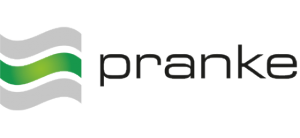| Cross Docking | Procedure in which goods pre-picked for a final destination in a distribution warehouse are only redistributed at package level. |
| CRP program | The Cyclic Replenishment Program is a procedure for the regular replenishment of articles. |
| EAN | The international (formerly European) article number is an internationally unique article identification. |
| EANCOM | A subset of EDIFACT, carried by EAN.UCC, specifically for retail and consumer goods. |
| EAN International | The umbrella organisation for the allocation of article and company identifications looks after various standards, including EANCOM. |
| EAN.UCC | The umbrella organization of EAN International and UCC. |
| EDI | Electronic Data Interchange is a generic term for the structured exchange of data between applications. |
| EDIFACT | Electronic Data Interchange For Administration, Commerce and Transport is an internationally standardized basic standard of EDI, supported by UN and ISO. |
| GLN | The Global Location Number is an internationally unique identification of a company and is assigned by the EAN.UCC. |
| GTIN | The Global Trade Item Number is the successor of the EAN and UPC. |
| Material EDI | The profile of the DTB for data exchange between producer and supplier. |
| NCTS | The New Computerized Transit System is a computerized transit system in Europe in connection with customs. |
| PLV | The passive contract processing. |
| SSCC | The Serial Shipping Container Code is an EAN package identifier. |
| Subset | A subrange of a standard, e.g. EANCOM from EDIFACT. |
| UPC | The Universal Product Code is an equivalent of the EAN in the USA. |
| VAN | The Value added network is a value-added service, i.e. networks with additional services to the pure connection. |
| WWS profile | EANCOM application profile for lifestyle retail |
| XML/EDI | Electronic Data Interchange using eXtensible Markup Language describes electronic data interchange using XML or approaches such as ebXML, Bizztalk, but not yet a standard. |
The branch specific profile for the textile industry.
FAQs
In all UN/EDIFACT Interchanges (UNA:+.? ‘) defines the separators as the first Advise segment of the message. The colon (:) becomes the Component Separator, the plus sign (+) becomes the Separator element, the dot (.) becomes the decimal separator, the question mark (?) becomes the Release Indicator, the space sign (invisible white space) remains a space, and the apostrophe (‘) is the Terminator segment.
In the EDIFACT subset EANCOM, four special characters (extracted from UNOA) have a special meaning and serve as default separators for EANCOM:
- Apostroph ‘ = Segment Separator
- Plus sign + = separator between segment identifiers and data elements contained therein.
- Colon : = Separator within a data element group.
- Question mark ? = Release character; if the question mark is immediately before one of the service characters, this character regains its normal meaning. For example, 10?+10=20 means 10+10=20. A question mark is represented by ??
If the trading partners agree on the use of the character sets B to F (inclusive) and the standard separators, the UNA segment must be used to explicitly indicate the use of the standard separators.
Further information on the UNA segment can be found at http://www.gs1.se/globalassets/eancom/edifact-syntax-eancom.pdf.
UNA, Service String advice
Function: To define the characters selected for use as delimiters and indicators in the rest of the interchange that follows:
The specifications in the Service string advice take precedence over the specifications for delimiters etc. in segment UNB. See clause 4.When transmitted, the Service string advice must appear immediately before the Interchange Header (UNB) segment and begin with the upper
case characters UNA immediately followed by the six characters selected by the sender to indicate, in sequence, the following functions:
Type & Length Cardinality Name Remarks alpha numeric, 1 mandatory COMPONENT DATA ELEMENT SEPARATOR alpha numeric, 1 mandatory DATA ELEMENT SEPARATOR alpha numeric, 1 mandatory DECIMAL NOTATION Comma or full stop alpha numeric, 1 mandatory RELEASE INDICATOR alpha numeric, 1 mandatory alpha numeric, 1 mandatory SEGMENT TERMINATOR Source: https://unece.org/trade/uncefact/unedifact/part-4-Annex-B


